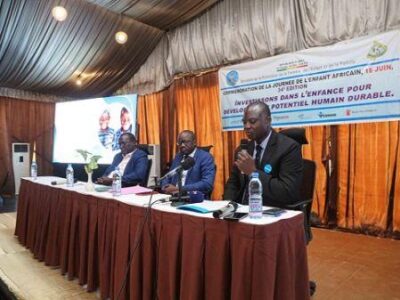
West Africa is Africa’s primary cotton production hub. While Benin and Mali remain the undisputed leaders, Côte d’Ivoire and Burkina Faso are engaged in a tight competition to secure a lasting hold on third place in the subregion.
Côte d’Ivoire’s cotton sector aims to produce 550,000 tons of seed cotton for the upcoming 2025/2026 season. The Professional Association of Cotton Companies of Côte d’Ivoire (APROCOT-CI) announced this goal during the International Exhibition of Agriculture and Animal Resources (SARA), held from May 23 to June 1, 2025, in Abidjan.
This announcement comes just three months after the Burkinabè government also expressed its ambition to raise national production to 550,000 tons for the same campaign, following a Council of Ministers held on April 9. This alignment is far from coincidental; it highlights the ongoing rivalry between the two neighboring countries. For several years, they have been vying for third place in West Africa’s cotton production rankings, behind Benin and Mali.
Falling Production in Both Countries
These contrasting performances reflect an overall downward trend in production in both nations. This is due to shared regional challenges and country-specific constraints.
According to data from the Regional Integrated Cotton Production Program in Africa (PR-PICA), seed cotton output in Burkina Faso dropped by an average of 11.5% per year, from 491,000 tons in 2020/2021 to 300,000 tons in 2024/2025. Over the same period, Côte d’Ivoire’s production fell by an average of 10.9% per year, from 558,227 tons to 351,000 tons.
This widespread decline is partly attributed to a massive infestation of jassids, which are cotton parasites, across most West African producing countries in 2022. The emergence of a more invasive species, Amrasca Biguttula, is believed to have caused losses of 30% to 50% in the region that year, according to official data.
This unprecedented outbreak, both in scale and spread, highlighted the vulnerability of cotton production systems to pest pressure and climate change. While measures have since been taken to manage the crisis, pest control remains a major challenge in the region, including in Burkina Faso and Côte d’Ivoire.
A Slight Edge for Côte d’Ivoire
Despite this shared regional struggle, the two countries are not on equal footing. Yield analysis shows that Côte d’Ivoire consistently achieves higher productivity. According to PR-PICA data, the average cotton yield in Côte d’Ivoire between the 2020/2021 and 2023/2024 seasons was 954.75 kg/ha, compared to 811.5 kg/ha in Burkina Faso. This suggests better agronomic practices in Côte d’Ivoire, particularly in fertilizer use and pest treatment.
This is especially noteworthy given that the average land area devoted to cotton each year was higher in Burkina Faso, at 557,777 hectares, than in Côte d’Ivoire, at 430,900 hectares, over the same period.
Moreover, Burkina Faso continues to face persistent insecurity due to terrorism in parts of the country. This has forced some farmers to abandon their fields, disrupting production cycles and shrinking the arable land base. The U.S. Department of Agriculture (USDA) noted in its 2023/2024 report on Burkina Faso’s cotton campaign that insecurity also hindered access to agricultural inputs in several production zones.
The Burkinabè government is counting on improved security and “territorial recovery” to revive output in the 2025/2026 season. While the upcoming campaign could reshuffle the cards, Côte d’Ivoire currently holds a slight advantage in the West African cotton hierarchy, behind Benin and Mali.
Beyond this bilateral rivalry, the entire West African cotton sector must strengthen its resilience to both entomological threats and climatic uncertainties to maintain its competitiveness on the global market.









Comments